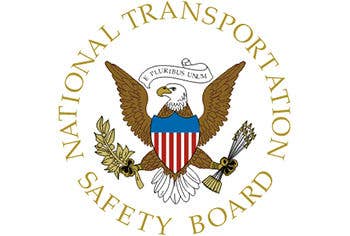
The National Transportation Safety Board is sifting through wreckage of two World War II-era aircraft that collided midair during the Wings Over Dallas airshow on Saturday.
Beech A36
Kernersville, North Carolina/Injuries: 3 Fatal
The private pilot had recently purchased the airplane, and it was more complex than the airplane he had flown previously. The accident airplane was also equipped with an upgraded avionics suite. The pilot had practiced loading and flying instrument approaches with the new avionics during recent flights with a flight instructor and another pilot onboard, and the flights were conducted in visual meteorological conditions (VMC). The pilot's most recent logbook was not available for review, so his instrument currency, as well as his recent and type of flight experience, could not be verified.
Review of the flight from departure to entry into the arrival airport's airspace revealed no unusual events or problems, and it was conducted in VMC. However, once the pilot began the higher workload phase of flight preparing to execute the instrument landing system (ILS) approach in actual instrument meteorological conditions, he began to exhibit some uncertainty and confusion. The first approach controller had to confirm the runway assignment three times and the pilot's assigned altitude once. After contacting a second approach controller, who vectored the flight to the ILS, the pilot had difficulty becoming established on the localizer, eventually causing the controller to cancel the approach clearance and issue vectors for a second attempt at the approach.
The instructions issued by the second approach controller were not complicated, but the pilot had difficulty flying assigned headings and altitudes. The controller also did not immediately detect some of the unusual maneuvers conducted by the pilot or recognize that he was perhaps suffering from spatial disorientation until the pilot explicitly said so. Instead of simply issuing a single heading and having the pilot climb a few hundred feet back into VMC, the controller asked the pilot if he was able to accept "no-gyro" vectors. The pilot accepted the offer, and the controller then issued turn instructions that required turns in both directions. This excessive maneuvering possibly exacerbated the pilot's spatial disorientation. The controller then directed the pilot to climb in an attempt to get him into VMC, but shortly thereafter, the airplane entered an aerodynamic stall/spin and impacted terrain. When interviewed, the controller was unable to explain the basics of no-gyro vectoring and was unable to demonstrate the ability to effectively provide the service.
Facility management provided four summaries of training scenarios that included unusual or emergency situations, but none included no-gyro vectors or focused on identification of emergencies. Overall, the recognition of and response to emergencies did not appear to be a strong training item, which is not limited to this facility. The FAA training did not properly prepare the controllers involved in this accident to recognize and effectively respond to disorientation scenarios.
Examination of the airframe, engine, and flight instruments revealed no mechanical deficiencies that would have precluded normal operation at the time of impact.
Probable Cause(s): The pilot's loss of airplane control due to spatial disorientation, which resulted in an aerodynamic stall/spin. Contributing to the accident was deficient Federal Aviation Administration air traffic control training on recognition and handling of emergencies, which led to incorrect controller actions that likely aggravated the pilot's spatial disorientation.

Subscribe to Our Newsletter
Get the latest FLYING stories delivered directly to your inbox






